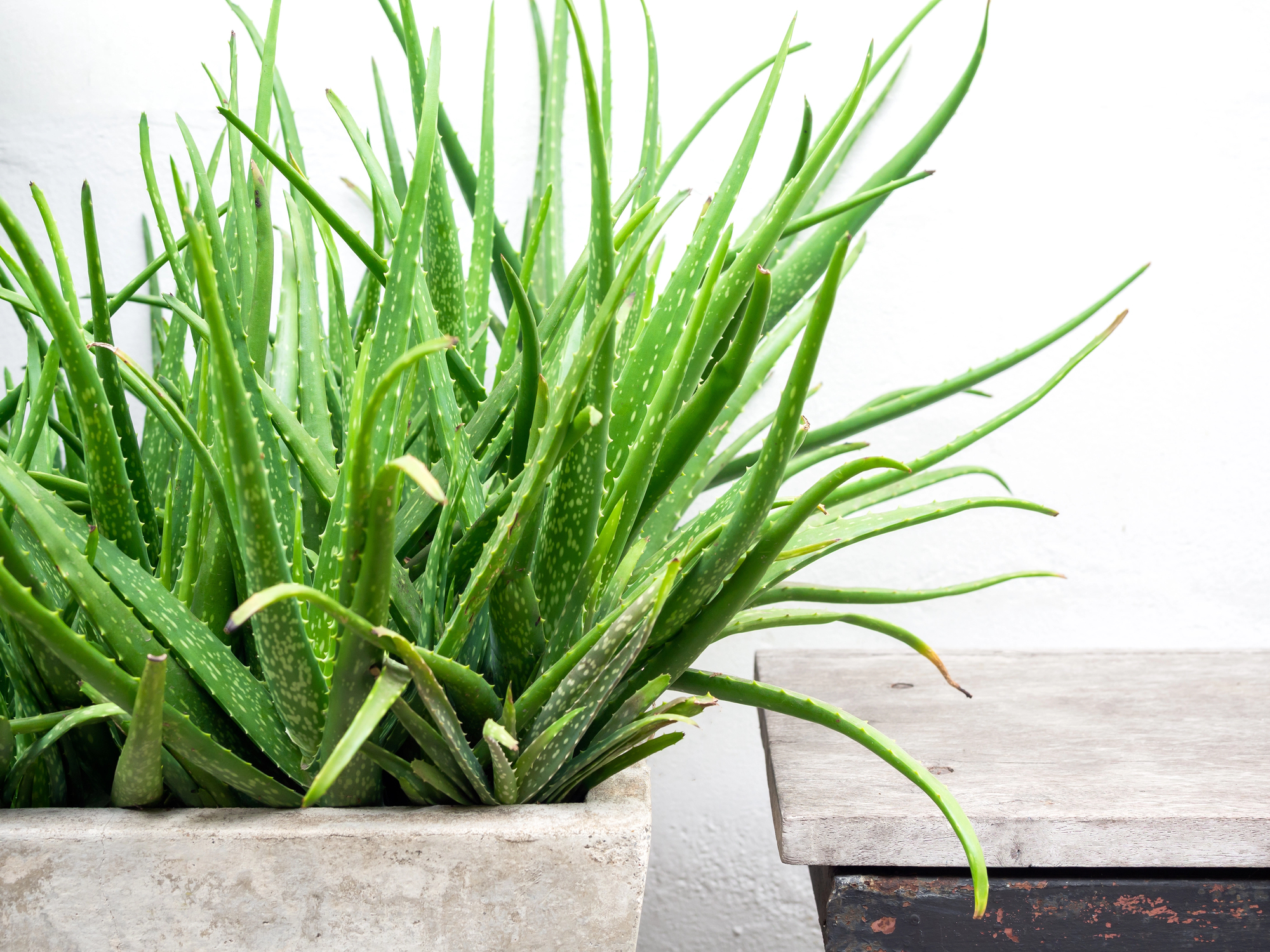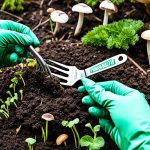Aloe vera plants thrive in bright, indirect sunlight. A sunny windowsill or a spot near a south-facing window is ideal for these succulents. The best place to put an aloe vera plant is where it receives 6-8 hours of indirect light daily.
Proper placement is crucial for aloe vera’s health and growth. These desert plants prefer warm temperatures and don’t tolerate cold well. Keep them away from drafty areas and air conditioning vents.
Aloe vera plants are low-maintenance houseplants that can improve indoor air quality. They’re also known for their healing properties, making them a practical and attractive addition to any home. With the right location, aloe vera plants can flourish and provide benefits for years to come.
Selecting the Right Location
Choosing an ideal spot for an aloe vera plant is crucial for its health and growth. Proper placement ensures the plant receives adequate light and air circulation.
Understanding Sunlight Needs
Aloe vera thrives in bright, indirect light. Place the plant near a south or west-facing window where it can receive plenty of sunlight throughout the day. Direct afternoon sun can be too intense and may scorch the leaves, so use sheer curtains to filter strong light if needed.
In winter, when daylight hours are shorter, move the aloe closer to the window to maximize light exposure. If natural light is limited, supplement with grow lights positioned about 6-12 inches above the plant for 12-14 hours daily.
Monitor leaf color as an indicator of light levels. Pale or yellowing leaves often signal insufficient light, while brown spots may indicate sunburn.
Ensuring Proper Air Circulation
Good air flow is essential for aloe vera plants. Avoid placing them in stuffy corners or enclosed spaces. Position the plant away from air vents, radiators, and drafty areas to prevent temperature fluctuations and excessive drying.
Consider using a small fan to improve air circulation if the room tends to be stagnant. This helps prevent fungal issues and promotes stronger stem growth.
Rotate the pot every few weeks to ensure even growth and prevent the plant from leaning towards the light source. This practice also helps maintain balanced air exposure around the entire plant.
Choosing the Correct Pot and Soil
Selecting the right container and growing medium is essential for aloe vera plants. These choices affect drainage, root health, and overall growth.
Pot Dimensions and Material
Aloe vera plants thrive in pots that are slightly larger than their root systems. A container 1-2 inches wider than the plant’s base is ideal. Terra cotta pots are an excellent choice due to their porous nature, which allows excess moisture to evaporate.
Plastic pots can also work but may retain more moisture. Regardless of material, the pot must have a drainage hole at the bottom. This feature prevents water from pooling and causing root rot.
For mature aloe plants, a pot 6-8 inches deep provides ample space for roots to grow. Smaller, younger plants can start in shallower containers and be repotted as they grow.
Optimal Potting Mix
Aloe vera requires well-draining soil to prevent water retention around the roots. A specialized succulent mix or a blend of regular potting soil with coarse sand and perlite works well.
To create a suitable mix:
- 2 parts potting soil
- 1 part coarse sand
- 1 part perlite or pumice
This combination ensures proper drainage while retaining enough moisture for the plant’s needs. Avoid using regular garden soil, as it’s too heavy and may lead to waterlogged roots.
Add a layer of gravel at the bottom of the pot before filling it with the potting mix. This extra step improves drainage and reduces the risk of root rot.
Watering and Feeding Your Aloe Vera
Proper watering and fertilization are essential for the health of aloe vera plants. These succulents have specific needs that differ from many other houseplants.
Watering Schedule and Technique
Aloe vera plants prefer infrequent, deep watering. The soil should be allowed to dry out completely between waterings. A good rule of thumb is to water every 2-3 weeks, or when the top 2 inches of soil feel dry to the touch.
When watering, saturate the soil thoroughly until water drains from the bottom of the pot. Empty any excess water from the saucer to prevent root rot. In winter, reduce watering frequency as the plant enters a dormant phase.
Signs of overwatering include yellowing leaves and soft, mushy stems. If these symptoms appear, let the plant dry out completely before watering again.
Fertilization Essentials
Aloe vera plants have modest nutritional needs. Fertilize sparingly, only 1-2 times per year during the growing season (spring and summer).
Use a balanced, water-soluble fertilizer diluted to half strength. Look for a formula with equal parts nitrogen, phosphorus, and potassium (such as 10-10-10).
Apply the fertilizer to moist soil to prevent root burn. Avoid fertilizing newly repotted plants or those showing signs of stress.
Over-fertilization can lead to leggy growth and weak plants. If in doubt, it’s better to under-fertilize than to apply too much.
Advanced Plant Care
Proper care techniques can help aloe vera plants thrive and avoid common issues. These methods address potential diseases and pests that may affect the plant’s health.
Preventing and Treating Diseases
Aloe vera plants are generally hardy, but they can develop problems in certain conditions. Overwatering is a primary cause of root rot, a serious fungal disease. To prevent this, ensure well-draining soil and allow the soil to dry between waterings. If root rot occurs, remove the plant from its pot, trim away infected roots, and replant in fresh, dry soil.
Leaf spot diseases can be caused by various fungi or bacteria. These appear as dark, water-soaked lesions on leaves. To treat, remove affected leaves and reduce watering. Avoid getting water on the leaves when watering.
Sunburn can cause brown or white patches on leaves. Move affected plants to a spot with less direct sunlight. Gradually reintroduce them to brighter light to prevent future damage.
Dealing with Common Pests
Mealybugs are small, white, cotton-like insects that cluster on aloe vera plants. They suck sap from the plant, weakening it. To remove mealybugs, use a cotton swab dipped in rubbing alcohol to wipe them off. For larger infestations, spray the plant with insecticidal soap.
Scale insects appear as small, round, brown bumps on stems and leaves. They also feed on plant sap. Remove them by gently scraping with a soft brush or fingernail. For severe cases, use horticultural oil or neem oil.
Spider mites are tiny pests that cause stippling on leaves. They thrive in dry conditions. Increase humidity around the plant and spray leaves with water to deter them. For serious infestations, use a miticide specifically designed for spider mites.
Propagation and Multiplication
Aloe vera plants can be easily multiplied through simple propagation techniques. This allows gardeners to create new plants from existing ones, expanding their collection or sharing with others.
Methods to Propagate Aloe Vera
Offsets, also known as pups, are the most common way to propagate aloe vera. These small plantlets grow from the base of the mother plant. To propagate, wait until the offset is about 3-4 inches tall. Gently remove it from the parent plant, ensuring some roots are attached. Let the cut end dry for a day or two to form a callus.
Plant the offset in a well-draining potting mix suitable for succulents. Water sparingly until roots establish. Another method is leaf cuttings, though this is less reliable. Cut a healthy leaf at the base, let it callus, and plant in soil. Roots may develop over time.
Division is useful for larger, mature plants. Carefully separate the root ball into sections, each with its own rosette and roots. Replant these divisions in separate pots. Provide proper care, including bright indirect light and minimal watering, to help new plants thrive.
You may also like…





